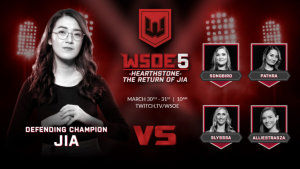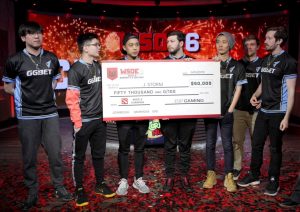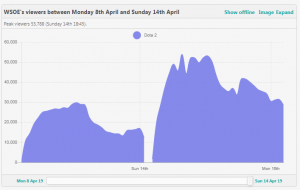Esports tournaments, and the larger gaming community, continue to present brands with a significant opportunity to reach, engage, and create a sustainable relationship with an otherwise hard to reach audience. We are witnessing a significant increase in sponsorship spending and we are welcoming more non-endemic brands into the esports ecosystem.
But will this shift come at the expense of traditional sports spending? Or will esports continue to gain share as a crucial component of a brand’s sports sponsorship portfolio? Whatever the outcome, we as an agency are excited to see the line between the two continue to blur.
The Production of Esports Events
I recently spoke at the Inven Global Esports Conference on the intersection of esports and traditional sports. Having come up in the world of sports marketing and broadcast production and recently helped launch KemperLesnik’s esports practice, I noted the high quality of esports tournaments. Producers have combined the very best elements of sports productions with big show entertainment value that captivates audiences both online and onsite.
Impressive as well has been the ability of esports tournament organizers to produce multiple game titles at a consistently high level. Companies such as Estars Studios have built their expertise in esports production through Emmy award-winning sports producers working side by side with a team of game specific experts which has proven to be a winning combination.
While esports tournaments have borrowed several best practices from sports broadcasts even in their infancy, esports has a huge head start on the sports world in one key area: audience. Born in the digital age and raised by a cord-cutting generation, esports has proven that linear TV is not necessary for their growth.
Reaching the Esports Audience
Even with the recent ABC/ESPN agreement with OWL, national broadcast and cable distribution will help build awareness and gain mainstream acceptance for esports but it is not critical for their success. Eighty percent of esports is watched digitally as opposed to only 20% of traditional sports (Goldman Sachs).
The vast majority of esports fans do not watch TV and they represent the youngest audience in all of sports. This not only creates a great opportunity for brands that want to reach a younger audience but for sports properties which want to groom and engage the next generation of their fans.
Whether it’s NBA 2K or other league or established sports properties creating esports partnerships, gaming will become a major tactic for traditional sports to reach and engage this young, digitally savvy consumer.



